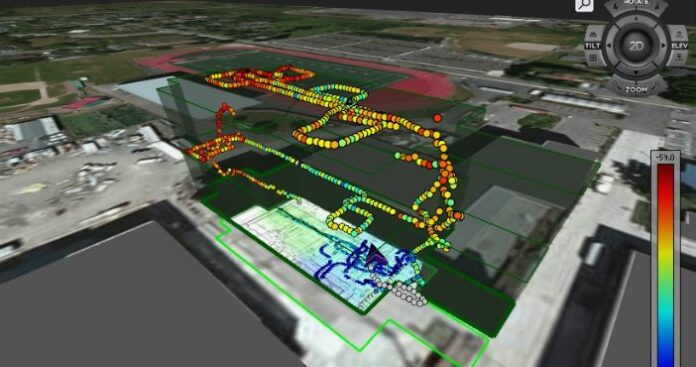“Extremely high frequency” means extremely fast 5G speeds
Millimeter wave (mmWave), also known as extremely high frequency (EHF), is the band of spectrum between 30 gigahertz (GHz) and 300 GHz. Wedged between microwave and infrared waves, this spectrum can be used for high-speed wireless communications as seen with the latest 802.11ad Wi-Fi standard (operating at 60GHz). It is being considered by standards organization, the FCC and researchers as the way to bring 5G into the future by allocating more bandwidth to deliver faster, higher-quality video and multimedia content and services.

Earlier this year, Ted Rappaport, founding director of NYU Wireless, said mobile data traffic is projected to rise 53% each year into the “foreseeable future,” and over the last 40 years, computer clock speeds and memory sizes rose by as much as six orders of magnitude. We need higher frequency spectrum to accommodate the increases in data usage, and one of the greatest and most important uses of millimeter waves is in transmitting large amounts of data.

Today, mmWave frequencies are being utilized for applications such as streaming high-resolution video indoors. Traditionally however, these higher frequencies were not strong enough for indoor broadband applications due to high propagation loss and susceptibility to blockage from buildings as well as absorption from rain drops. These problems made mmWave impossible for mobile broadband.
Too good to be true?
High frequency means narrow wavelengths, and for mmWaves that sits in the range of 10 millimeters to 1 millimeter. It’s strength can be reduced due to its vulnerabilities against gases, rain and humidity absorption. And to make things even less appealing, due to those factors, millimeter wavelengths only reach out to a few kilometers.

Just a few years ago mmWave was not being put to use because few electronic components could receive millimeter waves. Now, thanks to new technologies, it is on the brink of being an integral part of the next-generation network.
The solutions
Thankfully, the same characteristics that make mmWave so difficult to implement can be used to combat its shortcomings.
Short transmission paths and high propagation losses allows for spectrum re-use by limiting the amount of interference between adjacent cells, according to Robert W. Heath, Professor in the Department of Electrical and Computer Engineering at The University of Texas at Austin. In addition, where longer paths are desired, the extremely short wavelengths of mmWave signals make it feasible for very small antennas to concentrate signals into highly focused beams with enough gain to overcome propagation losses. The short wavelengths of mmWave signals also make it possible to build multi-element, dynamic beam-forming antennas that will be small enough to fit into handsets.

How mmWave spectrum is being handled
Last October the Federal Communications Commission (FCC) proposed new rules for wireless broadband in wireless frequencies above 24 GHz. According to the government organization, these proposed rules “are an opportunity to move forward on creating a regulatory environment in which these emerging next-generation mobile technologies – such as so-called 5G mobile service – can potentially take hold and deliver benefits to consumers, businesses, and the U.S. economy.”
According to the FCC, the organization is “taking steps to unlock the mobile broadband and unlicensed potential of spectrum at the frontier above 24 GHz.”
Service operators have begun investigating mmWave technology to evaluate the best candidate frequencies for use in mobile applications. The International Telecommunication Union (ITU) and 3GPP have aligned on a plan for two phases of research for 5G standards. The first phase defines a period of research for frequencies less than 40 GHz to address the more urgent subset of the commercial needs completing September 2018. The second phase is slated to begin in 2018 and completing December 2019 to address the KPIs outlined by IMT 2020. This second phase focuses on frequencies up to 100 GHz, according to National Instruments.
In an report titled Millimeter-wave for 5G: Unifying Communication and Sensing, Xinyu Zhang, assistant professor of the electrical and computer engineering at the University of Wisconsin, detailed the mmWave bands being considered:
- 57 GHz to 64 GHz unlicensed
- 7 GHz in total 28 GHz/38 GHz licensed but underutilized
- 3.4 GHz in total 71 GHz/81 GHz/92GHz Light-licensed band: 12.9 GHz in total

And the ITU released a list of proposed globally viable frequencies between 24 GHz and 86 GHz after the most recent World Radiocommunications Conference:
24.25–27.5GHz 31.8–33.4GHz
37–40.5GHz 40.5–42.5GHz
45.5–50.2GHz 50.4–52.6GHz
66–76GHz 81–86GHz

